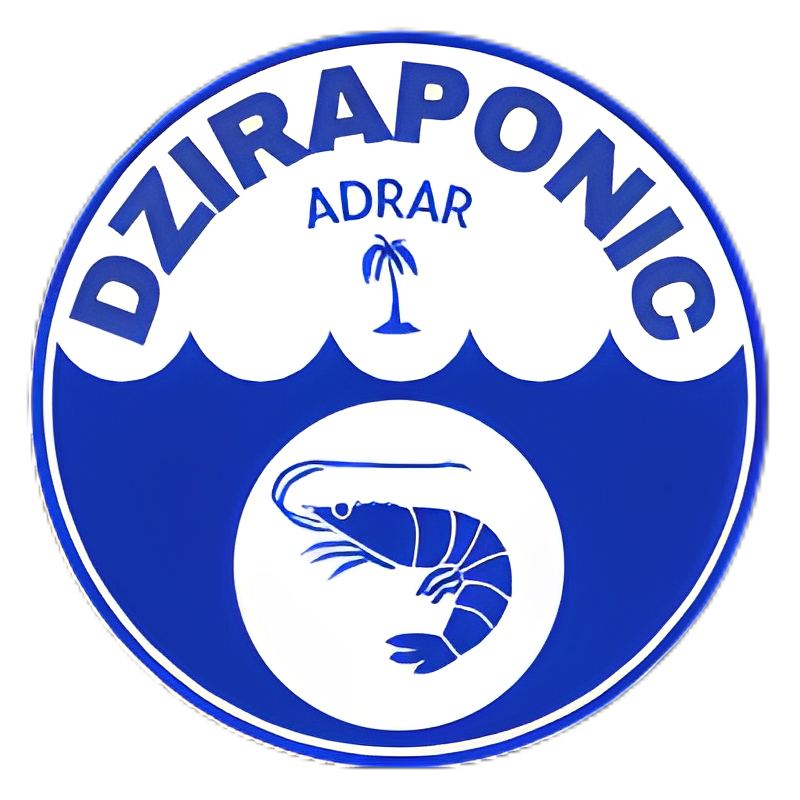YOU HAVE QUESTIONS ?
WE HAVE ANSWERS...
FAQ
1- What species of shrimp do you produce ?
The DZIRAPONIC Aquaculture Farm produces exclusively Vannamei shrimp. Also known as Whiteleg shrimp, Pacific white shrimp, or King prawn. This species is originally from of the eastern Pacific Ocean and is the most farmed species all over the world. It is suitable for breeding in saline and fresh water and is greatly appreciated by consumers for its refined taste.
2 - Where does the name "DZIRAPONIC" come from ?
Today located in the region of Meraguen, suburb of Adar. This compound name comes from Dzira and Ponic. The first comes from Dzira region (Biskra) and the second comes from aquaponics (aquaculture and hydroponic agriculture)
3 - What type of feed do you give your shrimps ?
Shrimp are traditionally considered to need a certain amount of fishmeal to meet their dietary needs. Being scavengers and opportunistic omnivores at their core, shrimp would convert fish meal better than vegetable meal according to traditional literature. However, new, and numerous studies would show that the shrimp assimilates vegetable flours as well.
For the sake of sustainable development, the industry and feed companies have therefore gradually incorporated vegetable meals into the diet of the Penaeid, so much so that fishmeal is no longer the main ingredient of food like it used to be. We can now find wheat, corn, soy, or other vegetable flours. The reason for this choice lies in the fact that the feed companies had to catch large quantities of fish at sea (not very edible fish) to transform them into fishmeal used to make the feed, which turned out to be a good practice. controversial. Thus, the DZIRAPONIC Aquaculture Farm has therefore worked in close collaboration with the feed companies and the researchers to create instead a feed of high environmental performance and up to their requirements.
DZIRAPONIC Aquaculture Farm exclusively uses this low-phosphorus feed. This food allows a minimum ecological footprint and a positive food conversion ratio for the ecosystem.
4 - Is the shrimp diet organic ?
This is an option that we have been considering for a long time, but it is not in our plans now. To meet current organic standards, shrimp would have to be fed almost exclusively fishmeal. As mentioned above (question 3), this is not an eco-responsible practice in our opinion. However, insect meal could prove to be a very interesting alternative for the future when it is marketed on a larger scale. We are monitoring this possible avenue.
5 - Do you use antibiotics or growth hormones for your shrimp farming ?
No, the high-quality spring water we use allows us to raise our trout without antibiotics, vaccines, or growth hormones. Also, because of our national accreditation, our shrimp are frequently analyzed by our laboratory to ensure the absence of therapeutic residues of any form.
6 - Are there any consumption instructions on your shrimp, on the presence of mercury ?
No. Our shrimps are raised in closed tanks and in spring water, hence the reduction of risks linked to the presence of mercury. According to the analyzes of our laboratory, our shrimp is not part of the species with consumption limitation and is even part of the category “very low concentration of mercury”.
7 - What do you do in winter with your shrimps ?
Our shrimps are raised in hermitic greenhouses and are therefore not subject to variations in temperature and seasons. This allows us to provide our customers with fresh trout all year round.
8 - How long does it take to produce a shrimp ?
We harvest our shrimp when they reach an average of 20 grams. To do this, it took more than three months, from egg to harvest. We are currently working on new breeding techniques that will allow us to reduce this delay, mainly by controlling the temperature of the water.
9 - Who are the parents of your shrimp ?
We source shrimp PLs (Post Larvae) from an American hatchery specializing in shrimp breeding. The PLs we source are all certified disease-free and must meet the strict standards of the Ministry of Fisheries and Fishery Resources before being imported.
10 - Are your shrimps GMO ?
Yes. The shrimp PLs we use are among the 35 species of seafood currently being genetically engineered around the world.
